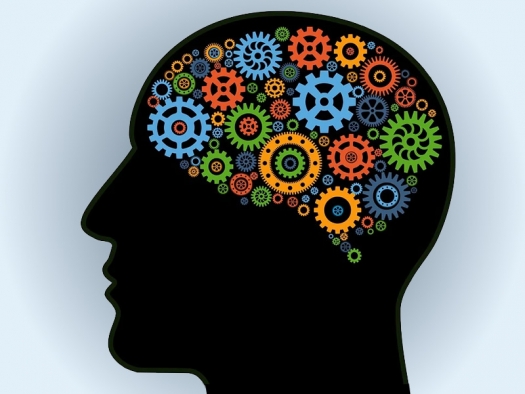BrainGears.jpg

Image by Gerd Altmann / Pixabay.com
We are all aware that the percentage of the population suffering emotional issues and taking psychotropic medications has grown immensely during the last many years. In addition, the use of opiates, cannabis and other illicit drugs has also grown substantially in that same time period. While people so often have undiagnosed underlying pathologies (such as Candida overgrowth, hypothyroidism or adrenal fatigue) which cause the symptoms (anxiety, depression, insomnia, fatigue) that drive them to medication or drug use, the brain ends up being chemically altered by these substances and even by the stress of the symptoms themselves, if they are long and serious enough.
Little could be done in the past for the damaged brain. We always hoped it would just heal itself once the offending substance or stressful situation was relieved. However, the brain is made of tissue just like any other organ, and is subject to chemical insult and excess wear, just like a knee or a liver.
The brain has been likened to a spider web, due to its inherent ability to adapt to allow for neurologic balance and control. The likeness is that if one area of the web is pulled on, there are slight deflections throughout the entire web. If the pull is long enough and hard enough, the deflections persist as the new norm for the brain tissue. We call that dependence or burnout, depending on the cause.
What causes this tissue damage? Aside from the drugs mentioned above, other causes are ADD/ADHD, autism, work burnout, PTSD and TBI. These non-drug causes (aside from TBI) are actually situations that induce excess wear and premature failure of dopamine, endocannabinoid, nicotinic acetylcholine and even GABA systems. Why? Because in these diagnoses the individual is having to struggle so much to either think clearly or suppress anxiety that the pathways involved in those functions actually wear out because the daily demand exceeds the tissue's design.
The great news and the purpose of this article is to present the science behind the use of intravenous NAD and amino acid combinations to assist the brain in the repair of these tissues damaged by drugs, stress and/or physical trauma. Nicotinamide adenine dinucleotide (NAD) combined with specific amino acids (L-threonine, glycine, L-phenylalanine, D,L-phenylalanine and L-alanyl/L-glutamine) is observed to bring about brain healing, both to a degree and with a speed that is not seen by natural history.
It essentially works like this: Psychiatric medications, drugs, tobacco, marijuana and alcohol (and similarly prolonged brain stress) work in various ways to cause overstimulation of neurotransmitter receptors, to get the desired effects. The brain's necessary adaptive quality responds by decreasing receptor number and receptivity. This is what causes dependence and tolerance. Because these substances and the intensity of their use is not something the brain is designed to withstand (at least not for long), the receptor adaptation and damage remains, even after the offending substance is no longer used. Some receptor systems (like dopamine) tend to spring back pretty well, if the use has not been too long and heavy. Other systems, particularly the inhibitory GABA and endocannabinoid, do not tend to spring back and can be majorly damaged still even years after substance use has subsided.
Treatment is aimed at addressing the common underlying and unaddressed diagnoses that are usually involved in people seeking for substances, so that organic causes of anxiety, depression, insomnia and fatigue are treated and are no longer causing chemical imbalance in the body. The brain itself is then treated to a daily infusion lasting about eight hours of IV vitamins and minerals (Myer's), then IV glutathione or alpha lipoic acid, then IV NAD and amino acids in specific combinations that have been found to target healing in specific neurotransmitter systems.
The brain is very adaptive and seeks to make do with the pathways available to it, even if they're barely held together with duct tape and string. However, when presented with an unnatural abundance of natural healing materials, the brain allows these damaged pathways to go offline and go into repair mode, with the infused materials prompting cellular repair and the actual restoration of the receptor sites. This is observed as patients being able to come off medications very quickly, even after years of dependence, and having a much shorted and less intense withdrawal than they otherwise would. Further and even better, after the first 3-6 days of treatment, they notice that higher functions are returning, such as sense of humor, social awareness, clarity of thought, memory, enthusiasm and mental energy/stamina. And because these changes are not brought about by a drug or biological agent acting on the receptors but by actual repair, the changes are permanent (as long as offending substances are avoided).
Regarding burnout, ADD/ADHD and the other states that cause premature wear, the response tends to be quicker than when substances have been involved, because there has not been as much chemical insult.
The treatment approach is chosen according to the patient's substance use or brain wear history and current and past symptoms. Treatment will last as few as 7-8 days for substances such as cannabis, alcohol or methamphetamine, and up to 18 days for benzodiazepines (Ativan, Xanax, Klonopin, Valium). This treatment has shown success with all mind-altering substances, but may not be effective in the case of damage from electroconvulsive therapy.


